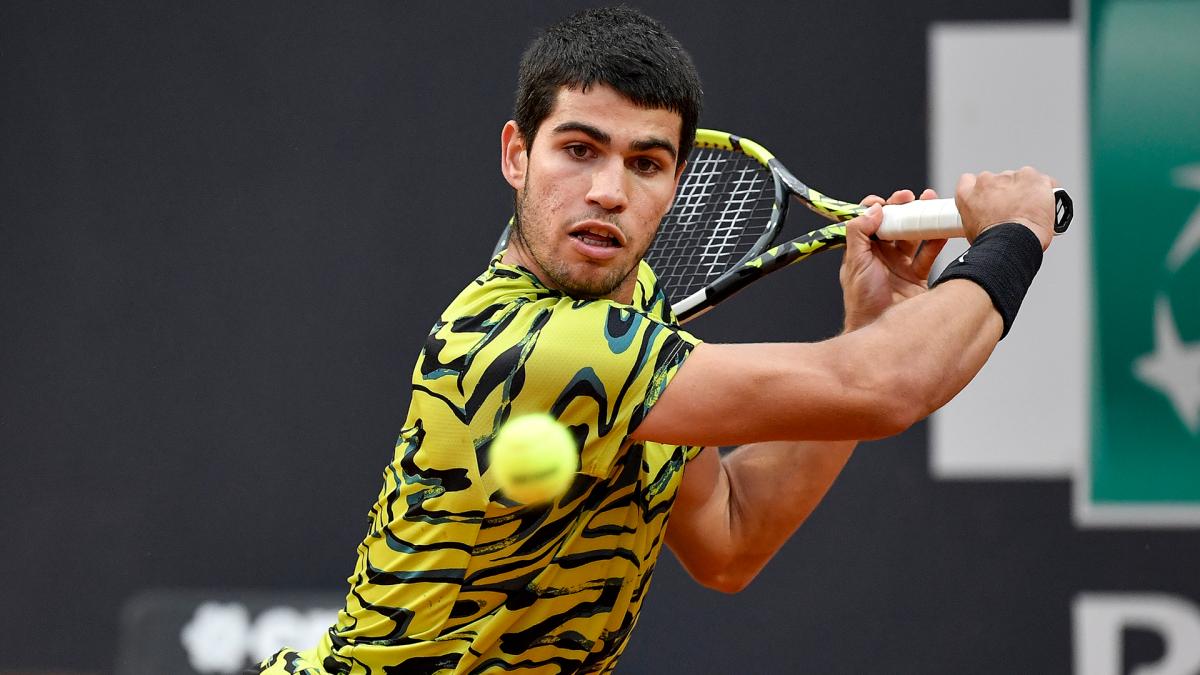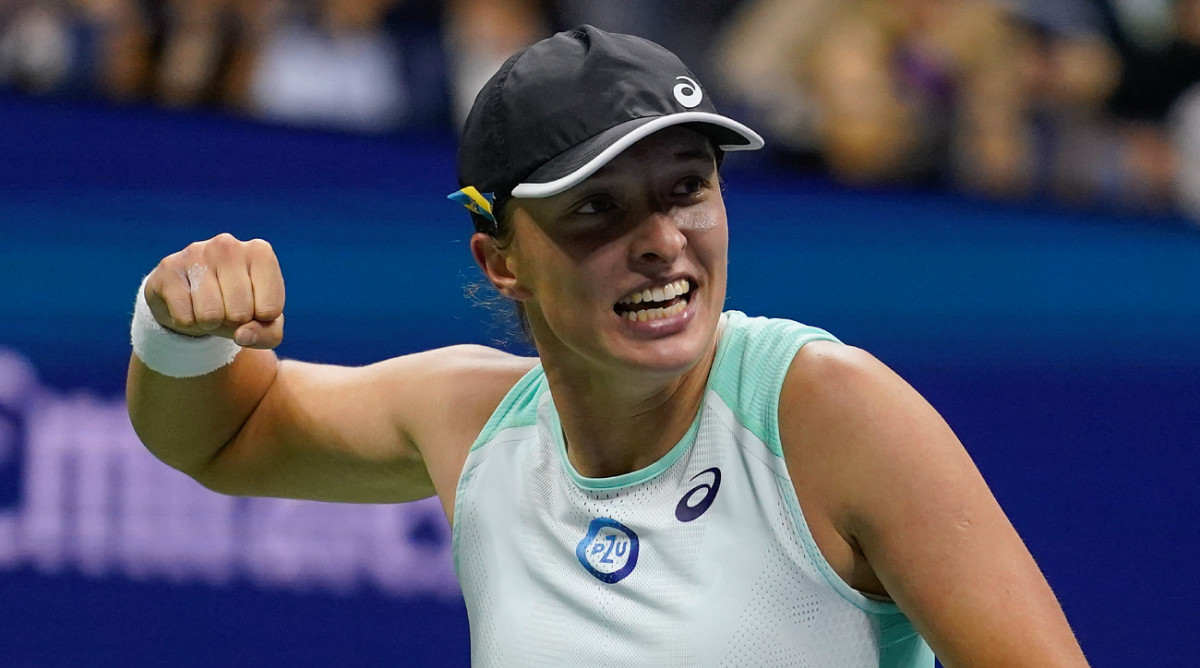Carlos Alcaraz’s Italian Open Upset Is a Blessing in Disguise

Hi, Jon,
Fábián Marozsán's straight-set defeat of Carlos Alcaraz was stunning. Coming into the Italian Open, Marozsán had never been in the main draw of an ATP event. He had lost five of his last six challenger circuit matches, had survived the first round of qualifying with a 7–5 third set and had overcome Jiri Lehecka in the round of 64 after trailing 4–2 in a decisive tiebreaker. Alcaraz had won 12 straight matches, looking particularly dominant on clay.
Is this the most surprising result since Dustin Brown defeated Rafael Nadal at Wimbledon, adding to his career 2–0 record against Rafa? Is this a mere blip for Alcaraz, or does it explode a weakness in his game others might exploit at Roland Garros?
Rob
• I was driving Monday and someone in one of my tennis group chats texted: “We are going to learn a lot about Carlos in the next few weeks.”
Yes, I thought, he will enter Roland Garros as the top seed, the betting favorite and the new Spaniard who has conquered clay. Then I stopped driving and saw the result from Rome: The No. 1 had lost to a qualifier? At the big-ticket event? In straight sets. Whoa. What a crowbar in the wheel of momentum.
Like Rob, a few of you asked to rank this upset. Biggest of the year? No doubt. “Most surprising result since Dustin Brown defeated Rafael Nadal at Wimbledon, adding to his career 2–0 record against Rafa.” Maybe. But part of assessing upsets depends on the trajectory of the vanquishing player. When Nick Kyrgios beats Nadal at Wimbledon it seems like a huge upset. But when Kyrgios reveals himself to be a wildly talented player, owning one of the best serves in tennis and playing expert grass court tennis that enables him to reach the 2022 Wimbledon final, it is the “upset” that doesn’t age well. When Hyeon Chung beats Novak Djokovic in Australia … and then struggles to stay in the top 500? That is an upset for the ages. All of which is to say, let’s follow Fábián Marozsán and his masterful drop shots a few more data points before we can assess the dimensions here more fully.
Where does this leave Alcaraz? One answer: This is a disguised blessing. He has two weeks off now. Some expectations in Paris get doused. If he didn’t have it before, he now has perspective that there are a lot of talented poppies in the field. “This could be for the best.” That’s what I’d be telling him. On the other hand, it must be unnerving to cruise for months only to be upended by a little-known qualifier, on the eve of the next major. As a wise man said: We are going to learn a lot about Carlos in the next few weeks.

Hey Jon,
Paula Badosa: Buy, sell or hold?
Liam, U.K.
• Depends on the price.
When she was No. 3, that ranking seemed unduly high. She is currently No. 35, which seems unduly low. If this holds—and it likely will not: She is still in the Rome draw as I write this—she would come to Roland Garros unseeded, the most dangerous of floaters. There is plenty to like about her game. She is an awfully good athlete. We think of her as a late bloomer, but she doesn’t turn 26 until November. She cuts an elegant figure, but in her run to the top five, she was grinding it out and winning ugly. I’m just not sure she has the game—power, serve, variety, mental unflappability—of a Świątek or Sabalenka or Rybakina right now. (Who does? Fair question.)
Side notes: The next time I hear a person within tennis say something uncharitable about Badosa will be the first. She’s well-liked among peers. She gets an A+ for interacting with fans. I know the Netflix team liked working with her. That, of course, only wins you metaphorical points. But “them’s good people” ought to be noted nonetheless.
Speaking of acknowledgments ...
One of you asked recently (and rhetorically) whether there was something icky about this buy/sell/hold rubric, reducing players to securities and commodities. Answer: Yes, probably. The creep of sports gambling probably adds to this. But I do think it’s helpful and fair to think of an athlete’s performance in terms of a company’s performance. There are goals and targets and reasonable expectations that are or are not met; there are sinuous results; there are adjustments and personnel changes and bullish and bearish periods.
Jon,
Are you prepared to change your opinion of Holger Rune?
Carlos, Mexico
• I had to look up what I said. Basically, that I was cutting him some slack and chalking his missteps up to being 19. He has since turned 20, so I’ll change that. But otherwise … I dunno. This is sloppy whataboutism, but I just got a text alert about Ja Morant (age 23, BTW) waving a gun AGAIN. What’s the worst thing you can say about Rune? That he scans arrogant? That he gets emotionally aroused during competition? That he is ambitious, sometimes at the expense of likability? I understand some of the blowback. I understand why he is no fan (or locker room) favorite. But this "bad boy" label is a bit much, no?
[Re: the Madrid complaints discussed last week] If any of these are genuine, provable grievances, shouldn’t they be filed officially with the WTA? Or directly with IMG? Couldn’t all the players, or the WTA Players’ Council send a letter? Snippy comments on Twitter serve no purpose.
Personally, I think it’s all ridiculous. Many tournaments and many players have had to deal with late-night matches. This comes up every year at the U.S. Open. Acapulco and the SA tournaments all go very late because their night sessions start late. The same at RG now. I completely understand the players’ complaints, as it throws off their routines, but what can be done, really? I’m wondering if, at this point in time, media contracts state they have some input regarding scheduling (to maximize prime-time TV viewing). Cakegate is a total joke. And I seriously find it difficult to believe the “no speeches” at the finals ceremony was some kind of retaliation.
Wondering what your take is on all this.
Betty Scott, San Francisco
• As I wrote last week, Cakegate might have been silly. (In one of the all-great tweets, this jibes with the take of 36-year-old Andy Murray). But seen as a symptom of a greater problem, it’s more problematic. Female models as ballkids (for men’s matches) is sexist and retrograde. Silencing female players at a trophy ceremony is worse.
It’s hard to argue that Madrid didn’t botch this in a huge way. At the same time, off-line and not for attribution, I have heard the defense articulated from a variety of constituents. I stress that I don’t agree with it. But some factions and voices do side with the tournaments. And it goes something like this:
“Wait. Hold on here. Both tours are squeezing events for more prize money. The women want equal prize money, though one cursory scan at the balance sheets suggests fans don’t value their product commensurately. Were there lamentably late matches? Yes. And when you run a two-week event, there almost always are. No one in tennis seems to want a shortened format, even though it’s working everywhere from baseball to cricket. Madrid fans tend to have these things called jobs, so it stands to reason that, for some, anyway, night sessions are preferable to day sessions. Matches run long—which is what happens in sports with a clock. (Hey, Iga: if you don’t like it, don’t squander a 6–4, 3–1 lead against Ekaterina Alexandrova and be pushed to three sets). Something has to give here. Don’t want night sessions? Fine, then take less money. Don’t like late matches? Fine, then change the tennis format. Madrid is trying its best. Then, as they present you a check for more than $1,000,000 and another for $500,000, with the sponsors present, in a stadium that didn’t come close to selling out, players are going to bust their chops?”

Jon, give me a reason to care about women’s tennis right now. I know the French Open is a few weeks from now, but I am struggling! Looks like Iga is going to win again. Looks like a few players have taken steps back. I miss Serena (and Ash Barty). Help!
Michael James
• Three stories off the top of my head:
- A new rivalry pitting Iga Świątek against Aryna Sabalenka. This has been lacking on the WTA Tour for years. Now we have a pair of stars—ranked one and two, both recent major winners, born within a few years of each other, with little warmth passing between them, from neighboring countries albeit with geopolitics as a backdrop—playing late and often.
- Taylor Townsend. She’s a mom. She’s a [plug, plug, plug] Tennis Channel broadcaster, who’s great fun on the air. She was treated shabbily by the USTA. She‘s a Nikola Jokić type of freak player, with a sui generis game. And here she is, climbing the ranking beating top-five players. Serve-and-volleying. On clay.
Tied to that ... - Variety. There’s real variety in the women’s game. Variety of style. (Ons Jabeur plays nothing like Coco Gauff, who doesn’t play like Świątek, who didn’t play like Barty.) Variety in physique. Variety in nationality.
Watch tennis with fuboTV. Start your free trial today.
Hey Jon,
Is there any truth to Madrid organizers putting their thumbs on the scale—by excessively watering the court to slow it down and helping Alcaraz return more serves?
It’s below the belt, isn’t it?
Deepak, New York
• I suspect the Madrid organizers were thinking, “This year has almost been way too smooth. We need something that creates a little bit of controversy and social media chatter.”
As Deepak notes, the allegation—denied by the event, we should add—was that groundskeepers watered the court to give the homegrown player, Alcaraz, an edge over a player who preferred a faster court. Daniela Hantuchová—an astute commentator and hardly a loose cannon—apparently spoke about this in real time.
If you will forgive the pun and forgive the mixed-sports metaphor—and I trust you will—is this dirty pool? The allegation has come up with Roger Federer. It was long suspected the U.S. Open tried to accommodate Serena Williams. Devil’s advocate: Is this different from “thumb-on-scaling” stars in terms of scheduling? And if we work on the assumption that both players are subject to the same conditions, if a tournament surfaces its court to suit a star player, is this truly unfair?
I would contend that even if this isn’t manifestly unfair, it’s still sketchy. In baseball, there are home games and you expect a small level of gamesmanship and “home cooking.” In this case, it’s being perpetuated not by team employees, but by folks who are supposed to show no partiality to any players. Even if you could defend it, why open the door to MORE suspicion that certain players get preferred treatment?
Shots
- A historic 2023 NCAA Tennis Championships is underway at the USTA National Campus in Orlando, as the facility is hosting the Division I, D-II and D-III men’s and women’s championships.
- It is the first time in NCAA history that all three divisions will compete for men’s and women’s season-ending trophies—in any sport—at a single site. More than 1,000 college athletes and coaches are expected to descend on Orlando for the 17-day event, which began yesterday and will conclude May 27.
